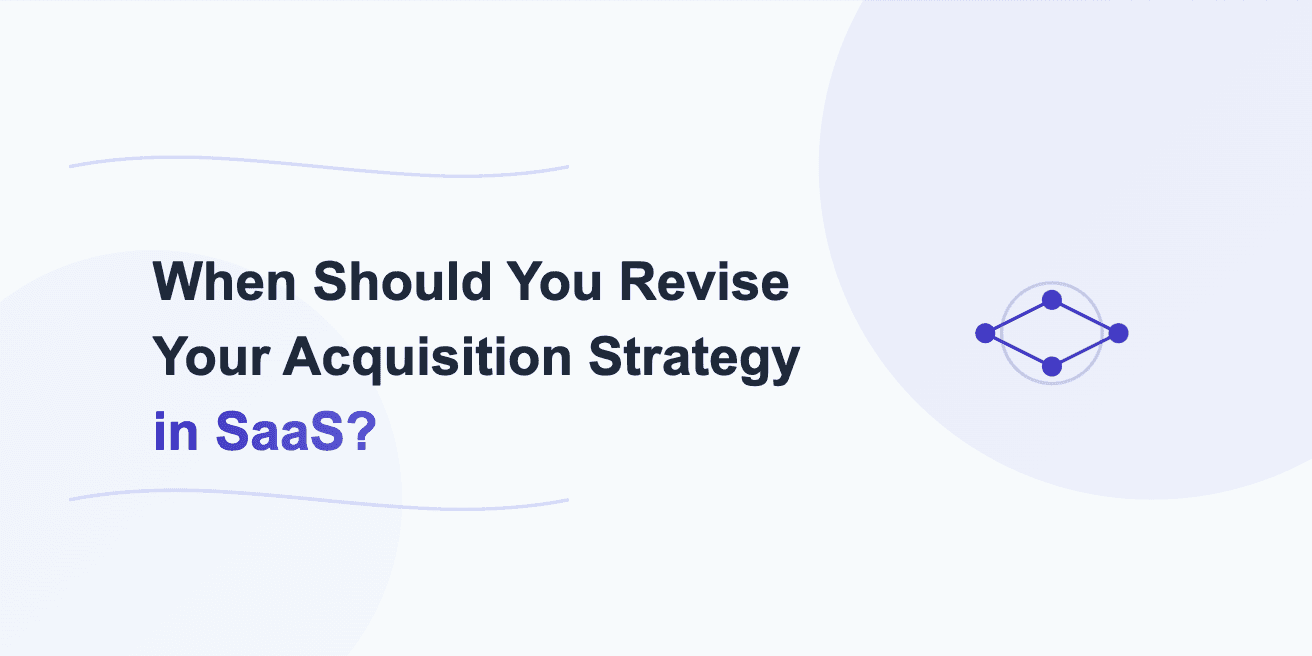
When Should You Revise Your Acquisition Strategy in SaaS?

by
Wiktoria Slowikowska
Nov 20, 2024
Identify and convert your most valuable users
Sign Up
Customer acquisition is the lifeline of SaaS businesses. It fuels growth, boosts revenue, and ensures long-term viability. But here’s the catch: what worked yesterday might not work today. The SaaS industry is constantly evolving, driven by changing customer needs, competitor innovations, and market trends. Clinging to an outdated acquisition strategy is like trying to run the latest software on outdated hardware—it just doesn’t fit.
So, how do you know when it’s time to revise your SaaS acquisition strategy? In this article, we’ll walk through the signs that your strategy needs an update and provide actionable steps to ensure it stays relevant and effective. By the end, you’ll be ready to refine your approach and future-proof your growth efforts.
The Foundation of a SaaS Acquisition Strategy

Before we dive into when to revise your strategy, let’s clarify what a SaaS acquisition strategy entails. At its core, it’s your roadmap for attracting, converting, and retaining paying customers. It spans everything from marketing channels and messaging to pricing, onboarding, and beyond.
In an ideal world, a well-planned strategy would yield steady growth. However, the SaaS space is anything but predictable. External factors like shifting customer expectations, economic changes, or technological disruptions can render your strategy ineffective. Recognizing when to adapt is critical for staying competitive.
Signs It’s Time to Revise Your Acquisition Strategy
The following are the key indicators that your SaaS acquisition strategy might need an overhaul. Let’s explore these signs in detail:
1. Growth Has Stalled or Declined
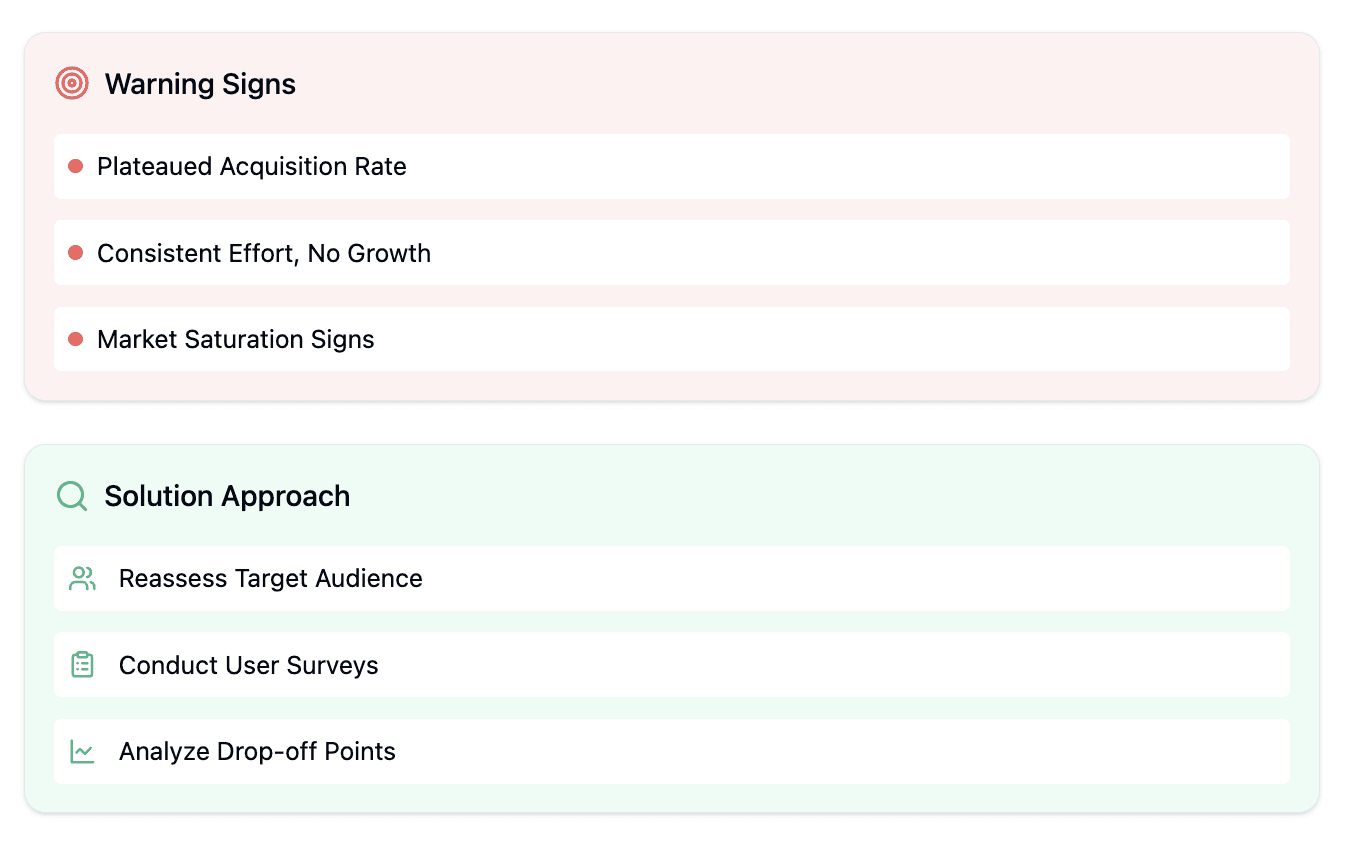
Flat or declining growth is a clear red flag. If your customer acquisition rate has plateaued despite consistent effort, it’s likely your strategy isn’t connecting with your audience as effectively as it once did. Stagnation can stem from targeting the wrong audience, market saturation, or changes in customer behavior.
Solution: Reassess your target audience. Has your ideal customer profile shifted? Conduct surveys and analyze user data to uncover gaps in your current outreach. Pinpointing whether the issue lies in awareness, consideration, or conversion can help you refine your approach. For instance, if prospects are dropping off during the trial stage, focus on improving onboarding or highlighting quick wins.
2. Customer Acquisition Cost (CAC) is Rising
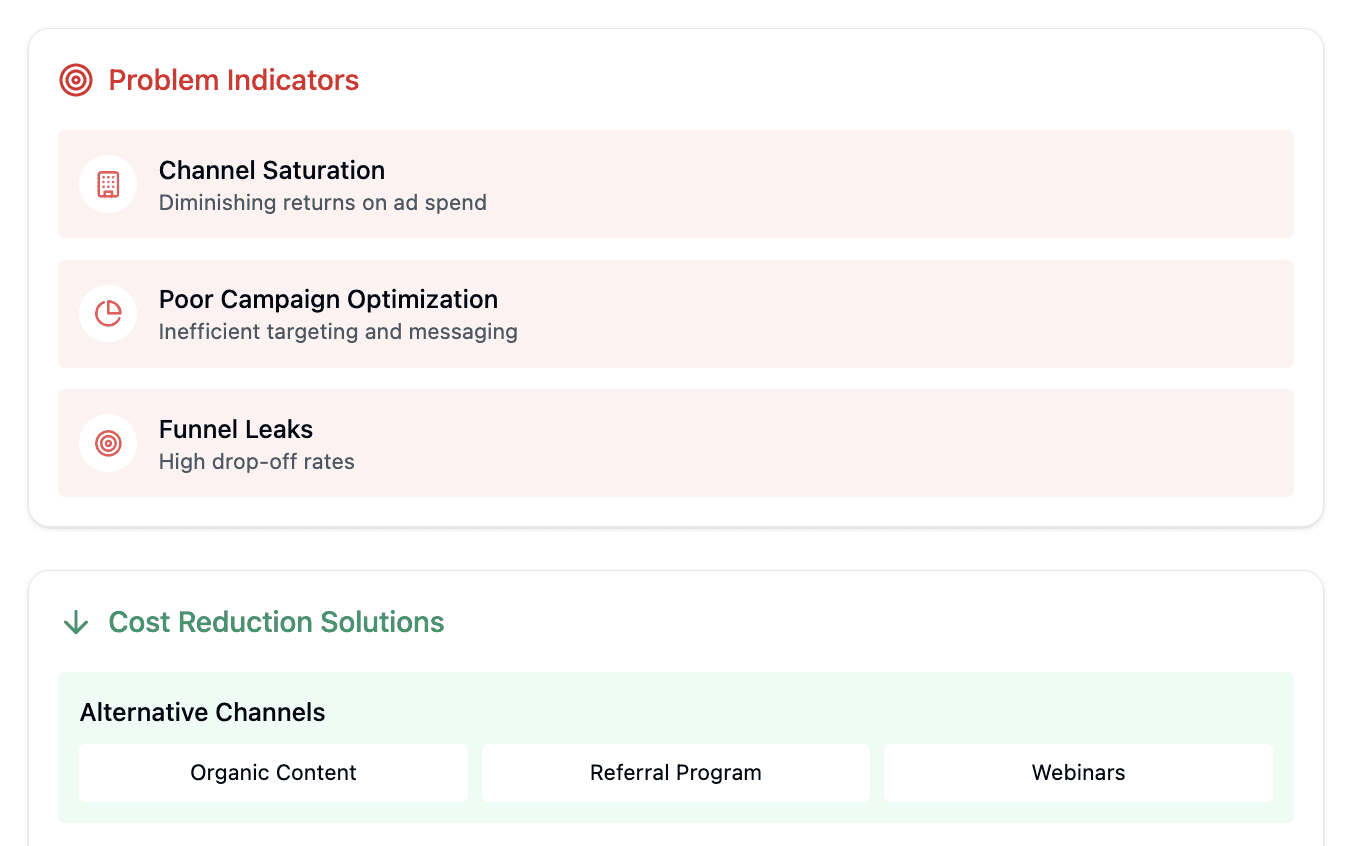
A rising CAC indicates you’re spending more to acquire each new customer, which could jeopardize your profitability. This often happens when your marketing channels become saturated, your campaigns are poorly optimized, or your funnel has leaks.
Solution: Audit your funnel to identify inefficiencies. Are potential customers dropping off at the consideration stage? Experiment with new acquisition channels to improve cost-efficiency. For example, if paid ads are delivering diminishing returns, consider investing in organic content, referral programs, or webinars to attract high-quality leads at a lower cost.
3. Your Competitors Are Outpacing You
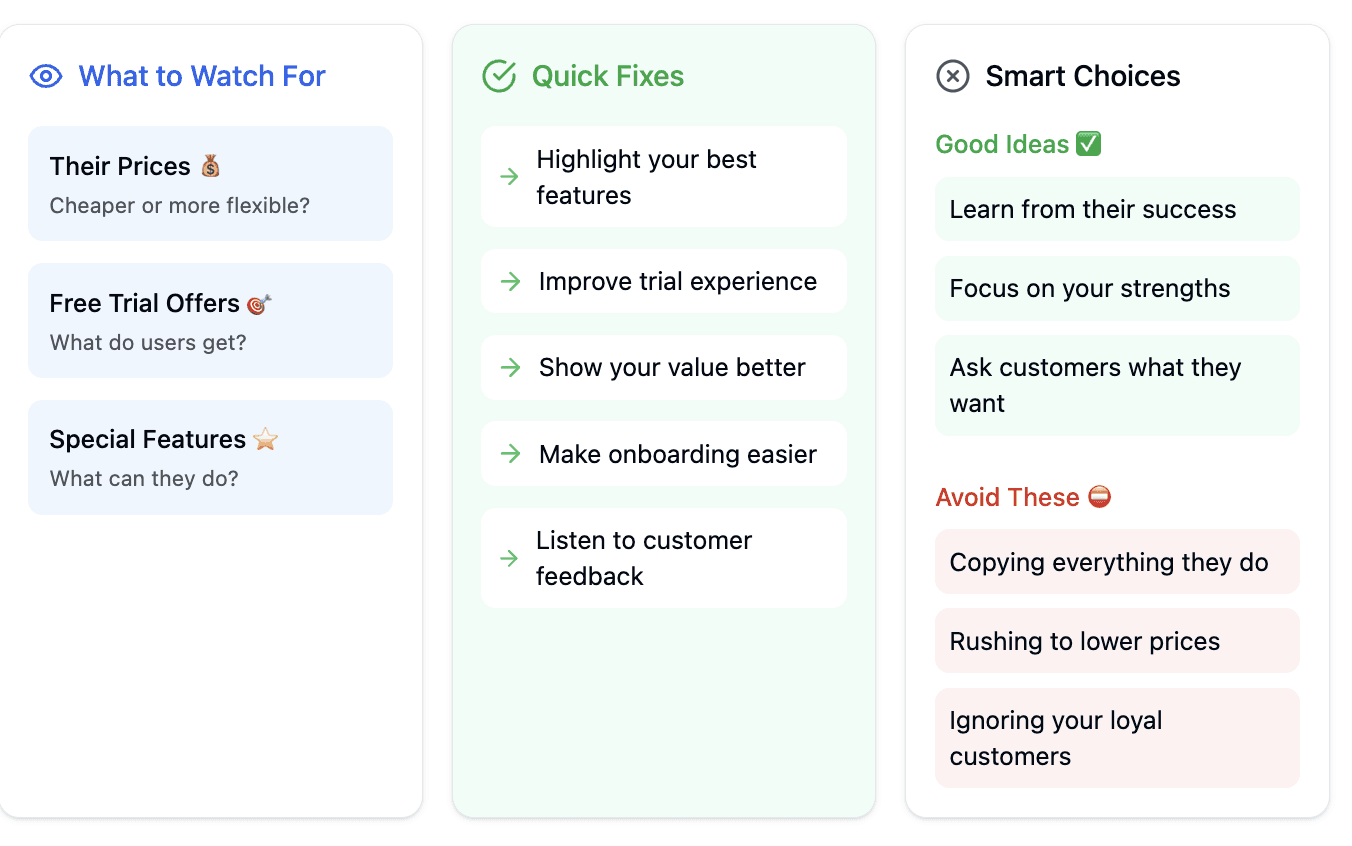
The SaaS market is fiercely competitive, and falling behind can cost you market share. If competitors are consistently outperforming you in acquiring customers or launching innovative strategies, it’s a sign that your approach needs a refresh.
Solution: Perform a competitor analysis. What are they doing differently? Are they offering better pricing models, stronger integrations, or more compelling messaging? Use this intel to refine your unique value proposition (UVP) and address gaps in your strategy. For instance, if a competitor is succeeding with free trials, consider revising your trial terms or emphasizing specific features that deliver faster results.
4. Shifting Customer Expectations
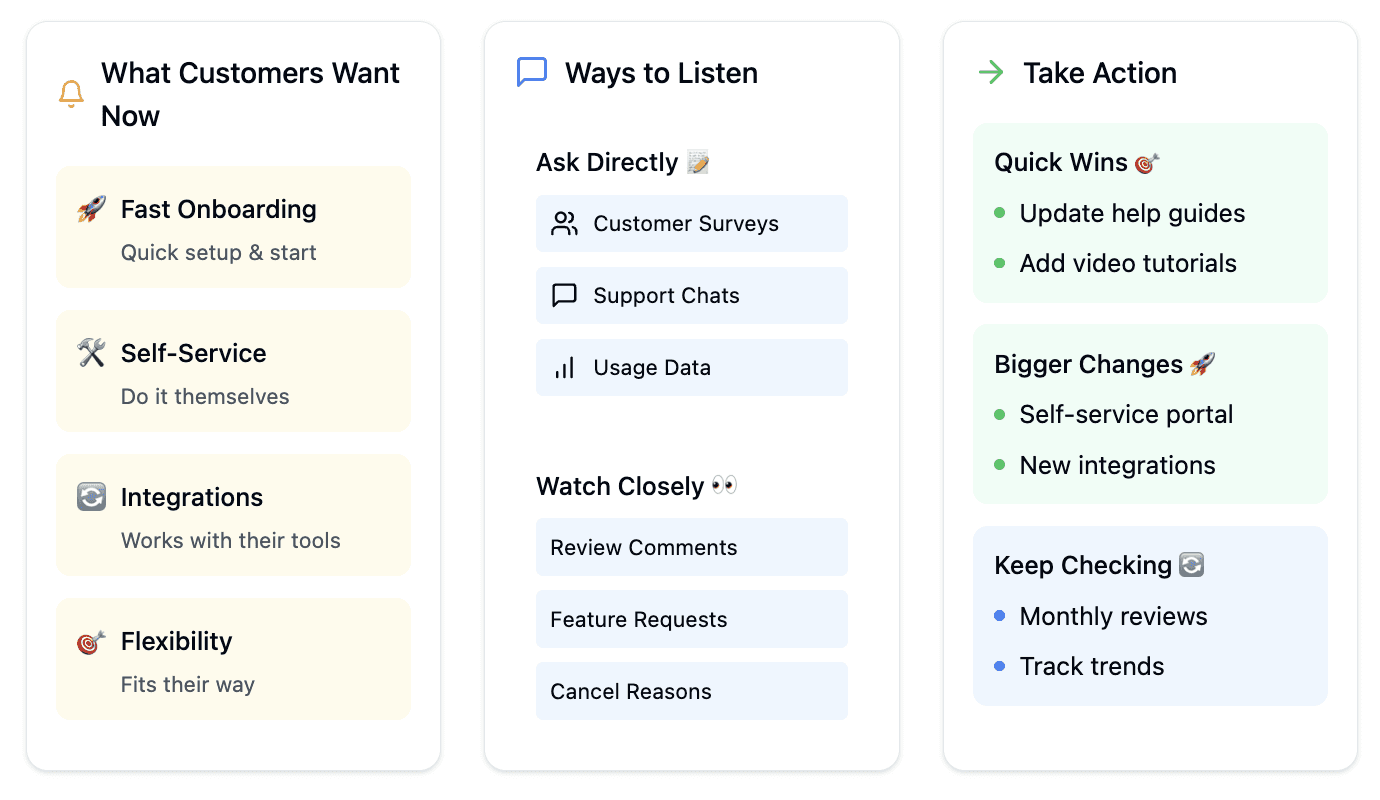
Customer needs and expectations evolve rapidly in the SaaS world. For instance, users may demand faster onboarding, self-serve options, or seamless integrations with other tools. If your strategy isn’t aligned with these changing priorities, potential customers may choose competitors who better address their needs.
Solution: Regularly gather feedback through surveys, reviews, and customer support interactions. Stay ahead of expectations by identifying trends before they become mainstream. If customers value flexibility, for example, ensure your messaging highlights customization options or flexible pricing tiers.
5. Market Dynamics Have Changed
External forces like economic shifts, regulatory changes, or emerging technologies can disrupt your acquisition strategy. For example, the rise of AI has reshaped customer expectations across industries, pushing many SaaS companies to integrate AI-driven features into their products.
Solution: Stay informed about industry trends and global developments. Participate in SaaS communities, attend webinars, and monitor market reports. Use these insights to pivot your strategy in response to changes. For instance, if a new technology trend gains traction, explore how you can leverage it to enhance your offering or differentiate yourself.
6. Launching a New Product or Feature
Expanding your SaaS offering is an exciting growth opportunity, but it also demands a revised acquisition strategy. A new product or feature may appeal to a different audience or require a unique marketing approach.
Solution: Develop targeted campaigns tailored to your new offering. Highlight how it complements your core product and solves specific pain points. For example, if you launch a collaboration tool as part of your SaaS suite, emphasize its ability to streamline teamwork and boost productivity.
7. Retention Rates Are Declining
Retention and acquisition go hand-in-hand in SaaS. If customers are churning shortly after signing up, it’s a sign that your acquisition strategy may be attracting the wrong audience or setting unrealistic expectations.
Solution: Align your acquisition messaging with the actual value your product delivers. Overpromising and underdelivering can erode trust and increase churn. Focus on attracting customers who genuinely benefit from your product, and ensure your onboarding process helps them realize that value quickly.
The Risks of Ignoring the Need for Revision
Failing to adapt your acquisition strategy can lead to wasted resources, decreased ROI, and a shrinking market share. Worse, you risk losing touch with your audience, making it harder to re-establish trust and relevance. By proactively revising your approach, you stay agile and positioned for growth.
How to Revise Your SaaS Acquisition Strategy
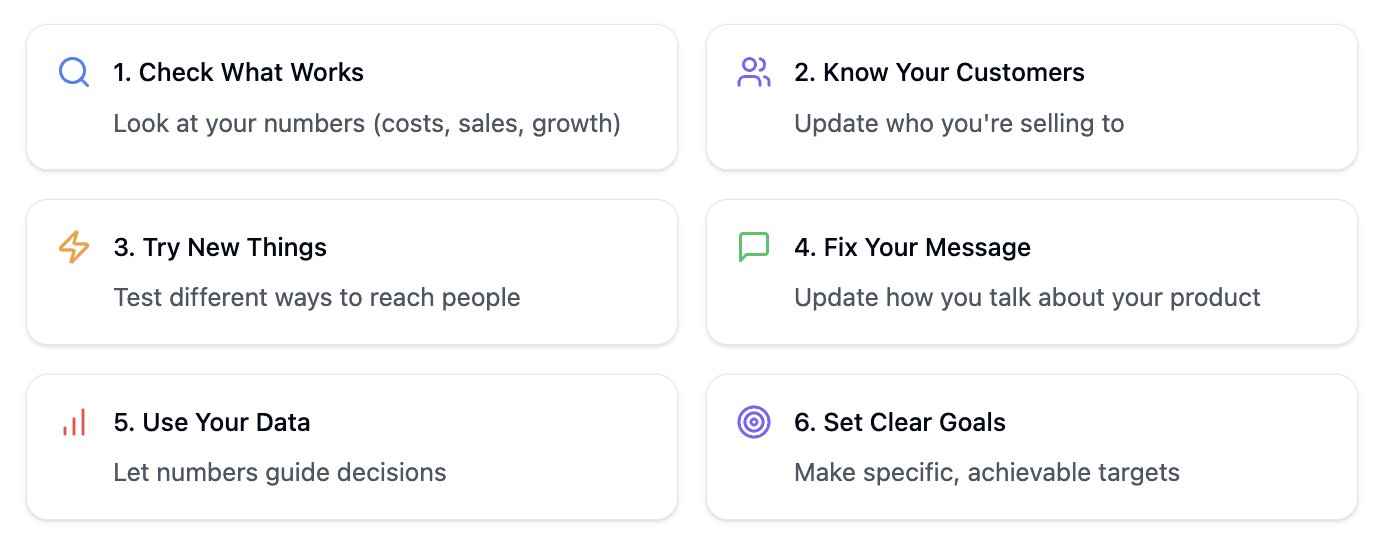
Now that we’ve covered the signs, let’s explore how to approach the revision process. Here’s a step-by-step guide:
1. Audit Your Current Strategy
Start by evaluating your existing strategy. What’s working? What’s not? Dive into your data to identify trends and gaps in performance.
Key Metrics to Review:
Customer acquisition cost (CAC)
Customer lifetime value (CLTV)
Conversion rates at each funnel stage
Churn rates
ROI of marketing channels
2. Revisit Your Buyer Personas
Your ideal customers may have shifted over time. Ensure your personas accurately reflect their current pain points, goals, and preferences.
Pro Tip: Use tools like HubSpot or customer feedback platforms to create dynamic personas based on real data.
3. Experiment with New Channels
Don’t be afraid to test new acquisition channels. If you’ve relied heavily on paid search, explore organic content marketing or partnerships with influencers in your niche.
Example: Many SaaS companies find success with LinkedIn Ads, webinars, or co-marketing initiatives.
4. Refine Your Messaging
The language you use to attract customers should resonate with their current challenges. Update your website copy, email sequences, and ads to reflect the value your SaaS provides today.
Action Step: Run A/B tests on headlines, CTAs, and value propositions to see what clicks with your audience.
5. Embrace Data-Driven Decision Making
Leverage analytics to guide every step of your strategy revision. SaaS tools like Mixpanel, Google Analytics, and Hotjar can provide insights into user behavior and campaign effectiveness.
6. Set Clear, Measurable Goals
Whether it’s reducing CAC, increasing conversions, or entering a new market segment, define specific objectives for your revised strategy. Use SMART goals to ensure they’re actionable and achievable.
Wrapping It Up
Revising your acquisition strategy isn’t just a response to challenges—it’s a proactive move to stay ahead in a dynamic industry. By recognizing the signs, addressing inefficiencies, and embracing change, you can position your SaaS company for sustained growth.
Now, ask yourself: is your current acquisition strategy driving the results you want? If not, it’s time to pivot. A well-timed strategy refresh can mean the difference between stagnation and success.
What’s your biggest challenge in customer acquisition? We’d love to help!
